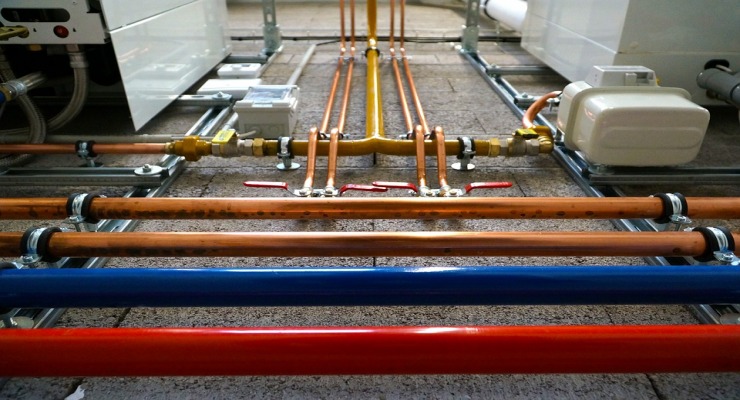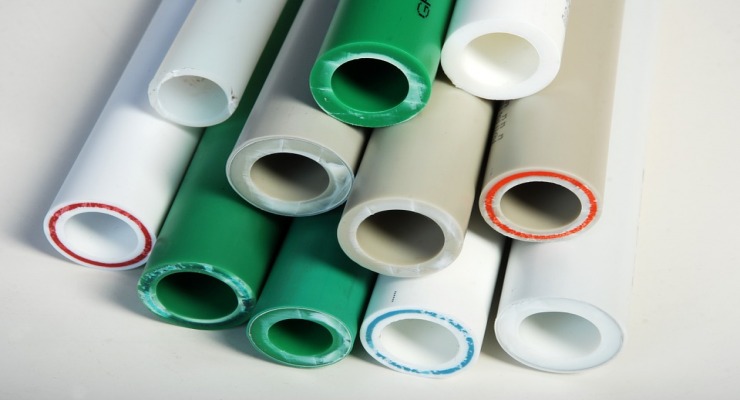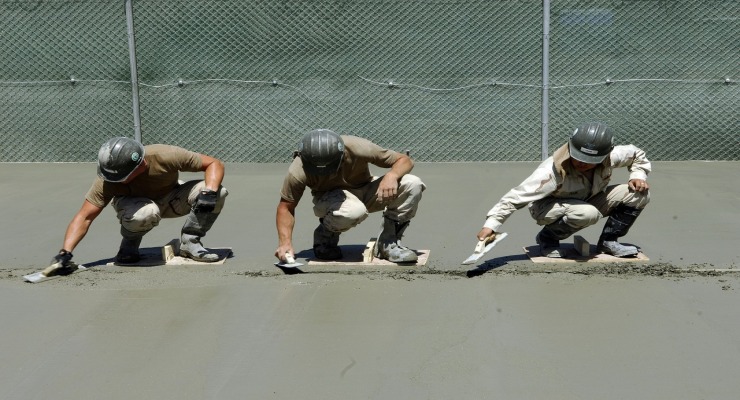Pipe connecting methods. Threading, welding or compression - which one is the best?
Are you dreaming of a perfect piping system - fully functional and durable enough? Does a possibility of an unpleasant surprise like a leak make you quite anxious? Every system, regardless of the building, uses various pipes and fittings. Their tightness depends greatly on a perfectly matched and implemented pipe connecting technique. There are many options in this regard. Which pipe connecting technique is the best and how to apply it for a specific system?

Types of pipes used in various systems
Home installations typically use pipes made of metals or plastic. Metal tubes include brass and copper elements. Pipes like this are usually used for water and heating systems. Their properties are very important. The tubes are highly resistant to harmful external factors, mechanical damage, corrosion and chemicals. They can also endure high temperatures and pressure.
There is also another group of elements made of plastic materials, e.g. PEX, PP-R and PE tubes. All of them are able to stifle resonance and mute noises generated by the system, as they do not convey vibrations. They are resistant to moisture and corrosion. Regardless, their biggest advantage is their low weight and a handy shape.
This type of pipes can be used for water systems, because they do not change smell or colour. As noted by many specialists, the connecting process PEX, PP and PP-R pipes is very quick and much easier than assembling copper pipes or tube threading.
Pipe connecting methods - the basic knowledge
When deciding to install a certain pipeline system, one should learn the basic techniques of pipe connection. There are two methods in this regard - referred to as fixed and detached.
For a fixed system - also known as non-detachable - separating and disassembling the connected elements is impossible without destroying them. This group includes methods like welding of PE pipes and gluing the tubes.
Detachable connections allow for pipes assembly and disassembly many times without damaging them. The methods include pipe threading, socket joints and clamps.
In sanitary systems, there are also direct and indirect connections. Indirect connections use additional fittings, e.g. elbows and tees. Direct connections do not use any supplementary elements.
How to connect PP-R pipes?
PP-R pipes are very popular. They are made of plastic material called polypropylene - hence the abbreviation PP-R. Pipes of this type are typically connected by welding. A PP-R coupler is the basic element used to make connections in this system - it allows to join two tubes together. If you want to change the course of the system, a PP-R tee comes in handy. Sometimes pipes of different diameters have to be connected. In such a case you need to use a reducing coupler or tee.
Polypropylene pipes need to be connected with a fusion welder for thermoplastics. Devices of this type differ by power. A 1100W fusion welder is quite popular. If you want a better efficiency, however, a 2660W pipe welder might be a better choice. The outer layer of the pipe gets heated up and melts, getting attached with the internal surface of the fitting. The connection is durable and leakproof.
PP-R system elements can be also connected by threading. To do this, one needs fittings with a special brass male or female thread. Additionally, a special product is needed to make the process easer. Thread oil is highly recommended.

How to connect PEX pipes? The most important info
To connect pipes of central heating and hot water systems, threaded or compression fittings are used. Both of the PEX pipe connecting methods provides satisfactory results and is resistant against various factors.
If threaded elements are used, one just has to tighten the nut to connect the pipe and the fitting. This way, the fastener ring will get pressed to the tube. The ring’s special shape prevents it from moving when the nut is being tightened.
If you use compressed fittings, a special contracting collet needs to be placed directly on the tube. This pipe connection method also requires a special crimping tool. The tool has to be put on the collet, and the compressor is turned on. After a few seconds a characteristic crack can be heard - it means the collet has been connected with the pipe.

PE pipes connection - which methods are the best?
PE pipes systems use two connection methods. Welding is one of them - it involves heating up the tubes, which makes them malleable. After that one needs to connect the PE pipes by pressing them together. It’s a popular solution for joining pipes of large diameters.
Another method of joining PE tubes involves using fittings - also made of polyethylene. This connection method is perfect for small pipes used e.g. in plumbing systems.
How to connect copper pipes?
Copper pipes connection technique is quite different from the other methods. The crucial element in this case is soldering process. One can use compression fittings, weld them or use threaded elements. Those methods, however, are rarely used to assemble systems with copper elements.
- Soft soldering, also known as tin solder, is used in water and heating systems to connect or repair pipes. This soldering method heats the metal up to 200-250ºC. To do this, a simple electric soldering iron or a gas burner can be used. Solder or soldering paste are crucial elements - they can be used interchangeably.
- Hard soldering - it differs from the first type by the melting temperature of the solder. It must be much higher than for tin solder. Usually, it’s 630-890ºC. In this case one has to use a high power soldering iron or a gas burner. This type of connection is used for pipes with diameter over 28 mm and in gas systems.
PP pipes connecting methods
Pipes and fittings made of plastic materials are used mainly for water systems of a building. There are two methods of pipe connection in systems of this type.
The first one is a flare fitting - also called push-fit connection. It’s the simplest method of connecting elements. To connect the pipes, a special lubricant is needed. The product should be spread inside the pipe hub, and the other pipe can be pushed in. Lubricants are safe for skin, so you can spread it with your hand, without using special tools.
Other methods for PP pipes connection involve using glue. To perform the process, one needs to chamfer (smoothen) the edges. Then, the depth of the pipe hub needs to be marked. The glue needs to be spread on the endings of the pipe and the fitting.
When pushing the pipe in, turn it by 90°. This way the glue will spread evenly across the whole surface. Wipe off the excess using a damp cloth.
Connecting PCV pipes is quick and easy, it doesn’t require any specialist tools, and you can install them by yourself. You just need the right products.
FAQ
Pipe welding - what is it?
Pipe welding is a process concerning mostly PE systems. The pipe connections are heated up to a certain temperature so that they become malleable. Pressing the endings together makes the pipes connected.


